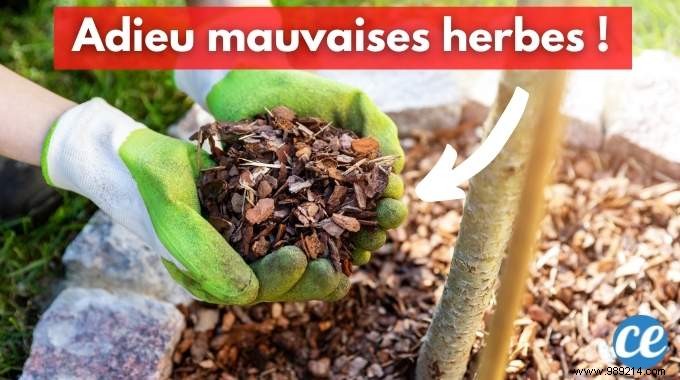
Any experienced gardener will tell you:
Mulching is a MUST for gardening.
Mulches are super effective at protecting your plants from weeds.
No more weeding! And with a good mulch, you also save on watering.
But above all, thanks to mulching, your flowers are in perfect health and you obtain better harvests of fruits and vegetables.
There are many materials for making mulch:plant mulch, mineral mulch or even mulching fabrics and felts.
In this article, we explain everything you need to know about mulching.
You will thus discover what mulching is used for and which one to choose for your garden or vegetable patch . Watch:
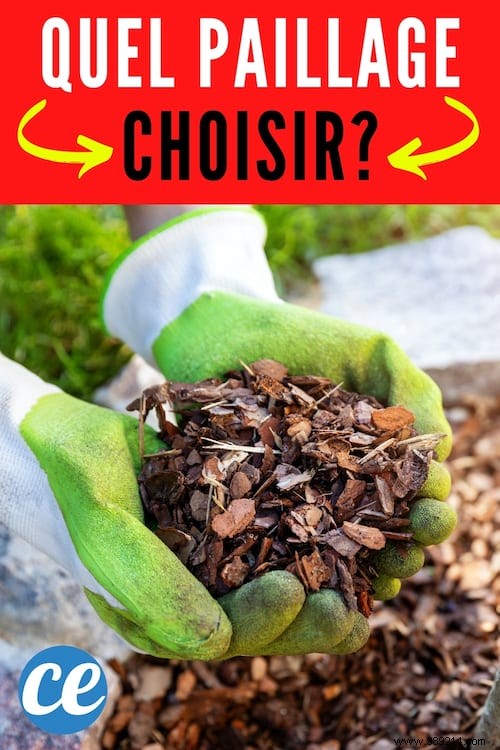
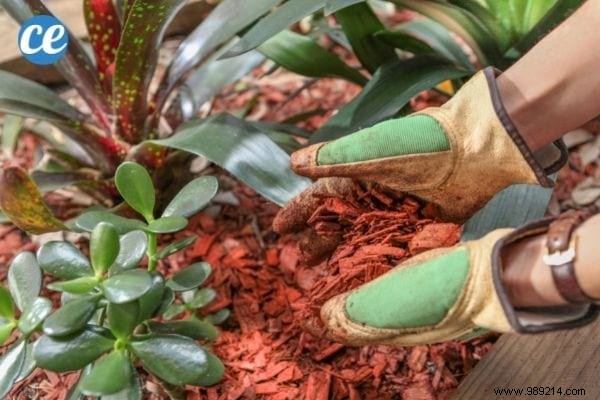
In nature, when the ground is bare, it's not normal!
Gardeners use the technique of mulching so as not to leave the soil bare. .
Mulching consists of covering the soil with plant, mineral or synthetic materials to nourish and protect it .
The different types of mulch can be applied anywhere in your garden.
Including around potted plants, fruit trees in the orchard and vegetables in the vegetable patch.
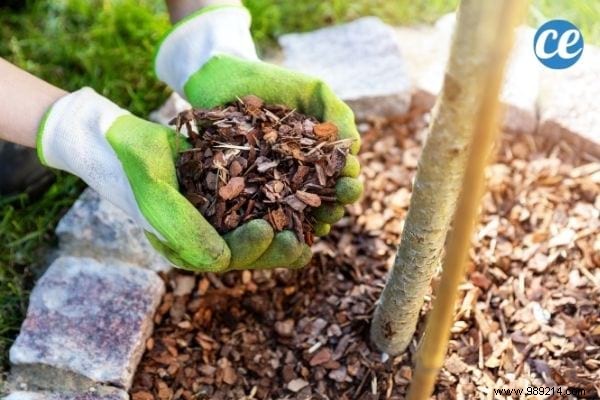
The benefits of mulching are numerous:
- Nourishes and promotes soil life. The organic matter in the mulch breaks down over time and gradually enriches the soil.
- Prevents the growth of weeds. Mulching blocks light from reaching the soil surface. This prevents weed seeds from germinating and developing. No more chemical weeding!
- Keeps the soil cool and moist. Mulching protects the soil surface from the sun's rays and the wind, which limits the evaporation of water. Thus, a mulch helps the soil retain moisture longer.
- Reduces watering. Because mulching limits the evaporation of water at the foot of the plants and retains humidity, it avoids constant watering, even in direct sunlight.
- Keeps fruits and vegetables clean. Mulching allows you not to leave your plantations in direct contact with the ground. This way, you avoid splashes and keep your crops clean and free of mud stains.
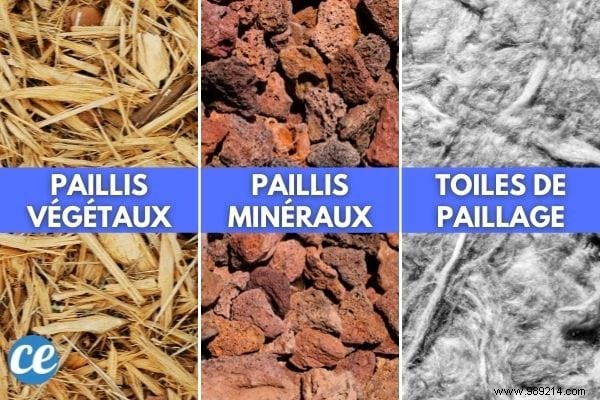
There are 3 main categories of mulch:
- vegetable mulches: dead leaves (preferably shredded), hay and grain straw, grass clippings, compost, wood chips, shredded pine bark, sawdust, pine needles.
-mulches minerals: pozzolan (also called "lava stone"), slate and other minerals crushed into small pieces.
- the canvas , felts and mulching films :woven vegetable fabrics, plastic films and even newspaper and recycling cardboard!
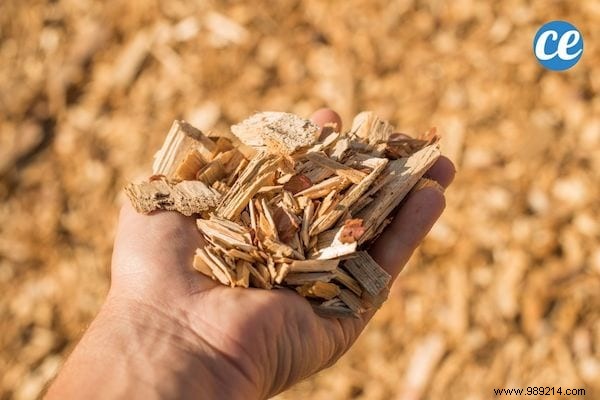
Appreciated for their aesthetic side, wood shavings are resistant to decomposition and can last for several years .
This mulch looks best in flower beds, shrub borders and garden paths.
Of course, wood chip mulch is ideal for wooded or shady gardens.
On the other hand, wood chips are not recommended for vegetable beds and annual flowers.
Indeed, this type of mulch is mainly used with perennial plants such as trees, shrubs and perennial beds.
This is also the case for all plant mulches with a long lifespan:wood chips, pine bark or twigs from trees and shrubs.
Why ? Plants with a short life cycle require annual planting.
And putting plants in the ground, it becomes very complicated with wood chips on the surface!
Wood chips or crushed bark are easily found in garden centers.
Otherwise, try calling a landscaper.
These professionals often have wood chips in stock at bargain prices.
Do you have a garden shredder? So consider shredding your Christmas tree, instead of throwing it in the trash.
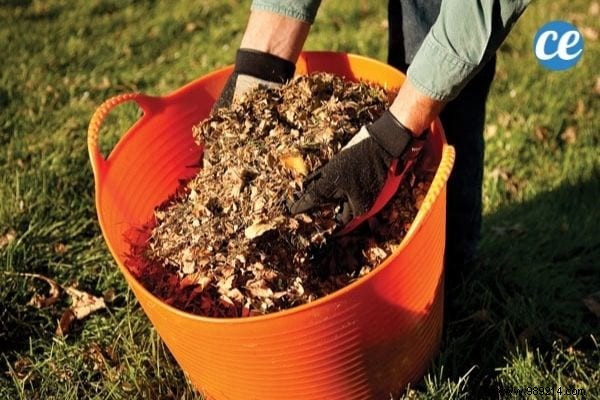
Do you have trees in your garden?
Shredding dead leaves creates a nutrient-rich mulch .
And all without spending a single penny!
To shred the leaves, you don't even need a garden shredder or other specialized machine.
All you need is a simple lawnmower equipped with a grass catcher, like this one.
This type of mower allows you to collect the leaves and cut them to the perfect size to mulch the ground.
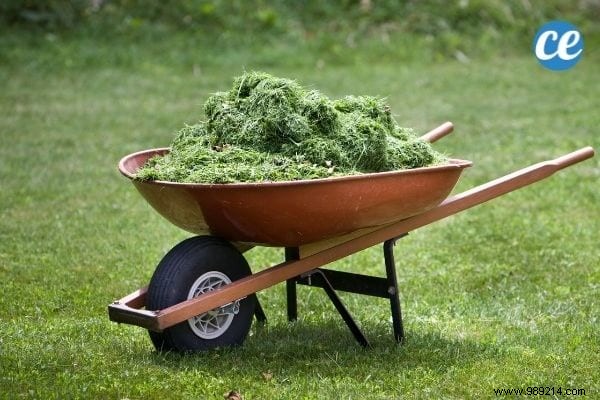
Salvage mulches like leaf litter and grass clippings have many benefits.
These mulches are not only free and easily available...
...but they also allow you to recycle your vegetable waste.
You can use grass clippings as mulch in your vegetable garden.
Rich in nitrogen , the mowing will feed the soil as it decomposes.
Don't forget to dry the clippings, to avoid fermentation and the development of mould.
Click here to find out how.
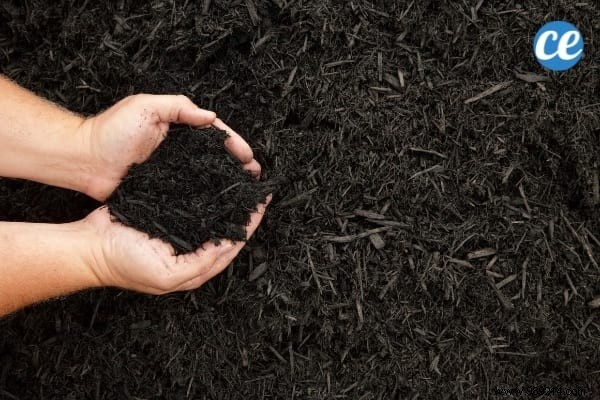
Do you have excess compost? Know that you can also use it as a mulch on the soil surface.
Compost enriches your soil to nourish your plants and make them healthier.
On the other hand, be careful that the mulch around your plant is not too dry, because it is not ideal for the roots of your plants.
So, it is best to first spread a thin layer of compost around your plants.
Then, cover the layer of compost with another vegetable mulch, dead leaves for example.
This allows the compost to stay moist and retain all of its enriching properties.
As a result, you get more beautiful flowers and better harvests of fruits and vegetables.
Want to know more about compost? Click here for the easy guide for beginners.
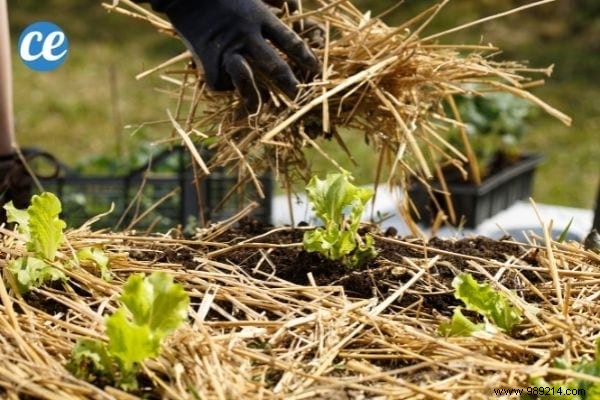
Hay and cereal straw are among the best mulches to cover the soil of your vegetable garden.
Moreover, it is the straw that gave its name to the mulching technique.
So, mulching with straw is quite logical!
Straw allows you in particular not to leave your plantations in direct contact with the ground.
Thus, you avoid splashing soil and keep your plantations clean.
And because this type of mulch retains soil moisture, it also means less watering of your vegetable garden .
Hay and cereal straw also prevent weeds from growing, and provide humus to the soil as it decomposes.
In addition, grain straw and hay are cheap and readily available from farmers.
Just be sure to choose seed-free, weed-free and organic hay or straw, preferably.
On the other hand, avoid making heaps around the base of your plants, otherwise you risk attracting slugs and rodents.
Mineral mulches do not break down, and are therefore much more durable than plant mulches.
For this reason, they are generally more economical than most commercial plant mulches.
They contribute to the warming of the soil and are particularly recommended for plants that like dry climates, such as rockery plants.
In contrast, mineral mulches do not improve soil fertility and retain less moisture.
They are therefore more interesting for soils that are already very rich.
Mineral mulches are a good option if the purpose of the mulch is primarily to limit weed control .
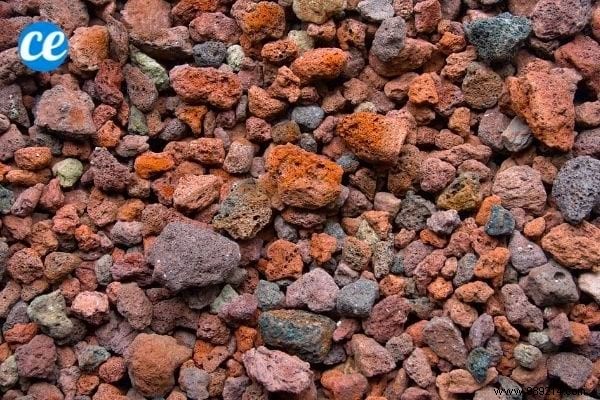
One of the most common mulches is pozzolan, also called "lava stone".
It is a porous and light volcanic rock, found in the Massif Central.
Its color, varying from red to black, is highly appreciated for its decorative value .
Pozzolan helps reduce weeding, but it has other benefits.
It also helps protect the roots of your plants against the winter cold.
You can find it in garden centers and DIY stores.
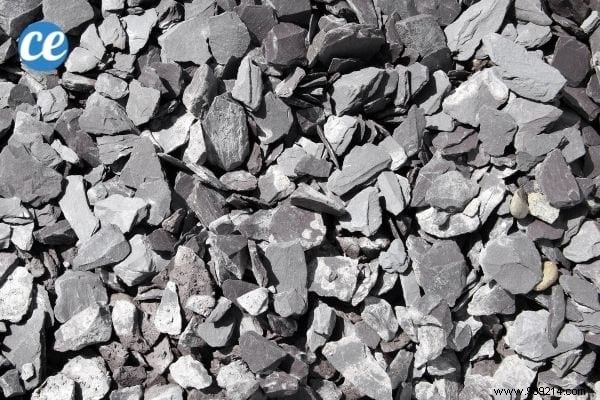
Slate reduced to small pieces is one of the most elegant solutions to mulch your garden.
You can use several other mineral materials:
Crushed brick, clay balls, pottery debris, gravel and pebbles.
By playing with their colors, mineral mulches become real decorative elements in your garden.
Mulching fabrics and films can cover large areas, but they are not aesthetic.
This type of mulch is an interesting solution for your vegetable garden, or to protect the base of young trees and shrubs.
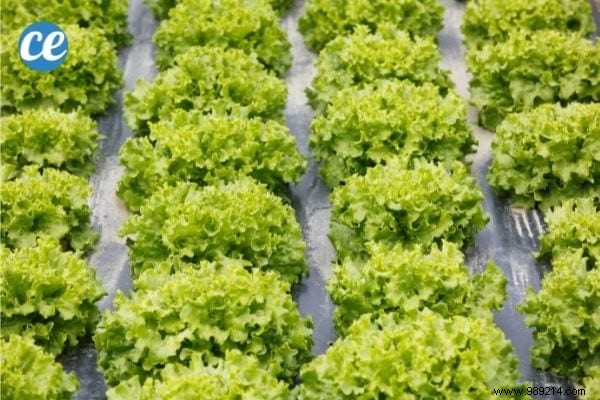
Not very aesthetic, this black plastic film... But in the vegetable garden, it can do real wonders.
This is the technique that the pros use to spend less time on crop maintenance.
Stretched on the ground of your vegetable garden, it transmits the heat of the sun and allows the soil to warm up more easily.
Because the plastic film stays warm and dry, it protects the fruits of climbing vegetable plants from rotting.
It is therefore perfect for strawberries, melons and cucumbers.
And, of course, like all other mulches, plastic film prevents weeds from growing and retains soil moisture.
However, this type of mulch also has major drawbacks:
It is environmentally unfriendly, non-biodegradable and unsightly.
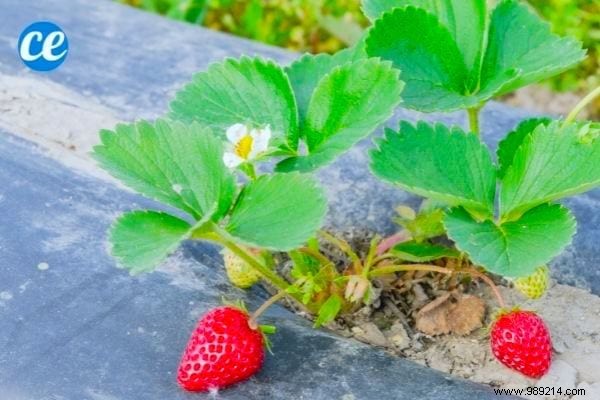
Plastic film is also used in raised gardens, also called vegetable beds. Here's how:
- After loosening the soil and removing weeds, roll out the mulching film over the entire surface of the vegetable patch.
- Block the ends of the film with earth or stones.
- Make incisions in the film with a bulb planter for each foot of your plants. Fill the holes with plants or seeds.
Because plastic is waterproof, you can't rely on rainwater to sufficiently water your plants.
Instead, use a watering system on the soil surface BEFORE rolling out the plastic wrap.
The simple and economical solution is to make automatic watering by recycling a plastic bottle. Click here to find out how.
Otherwise, you can use microporous garden hoses, like these.
Or, you can also install a drip system, like this one.
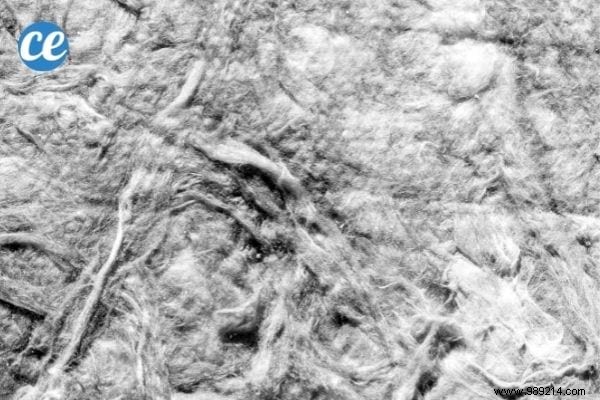
Plant fiber felts and fabrics (coconut, cotton, linen, hemp or jute) have the advantage of being natural and biodegradable.
In addition, they allow a good infiltration of air and water , while preventing weeds from coming to the surface.
But this type of mulch still has some disadvantages.
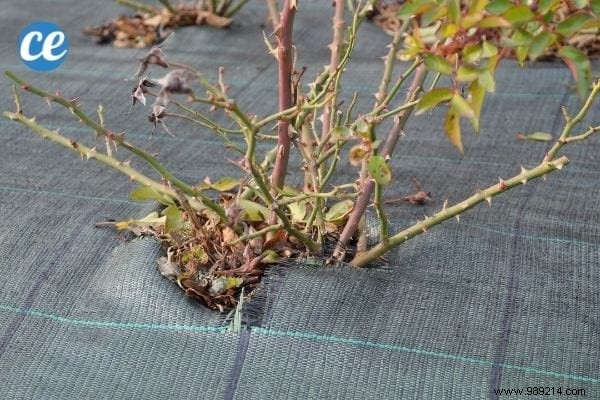
First of all, their price:felts and vegetable fabrics are relatively expensive.
When exposed to light, the plant webs degrade (approximately 2 years).
To make them last longer (and because they are not very aesthetic), cover them with a layer of vegetable mulch.
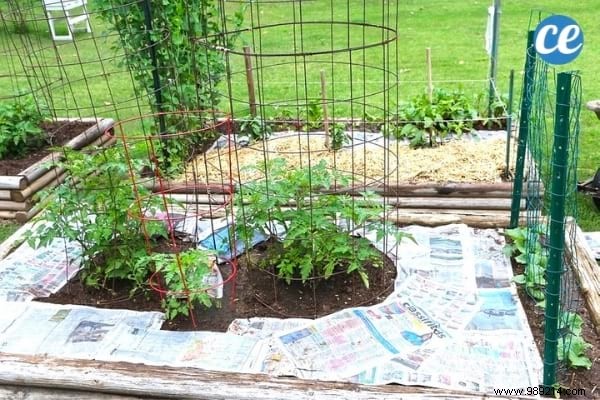
This is one of the most economical methods for mulching your garden.
Newsprint and cardboard help maintain good soil moisture.
They are also effective mulches against weeds.
On the other hand, they must be changed every year, because they decompose quickly .
And it is better to provide a second layer of vegetable or mineral mulch to hide the paper or cardboard.
Indeed, paper and newspaper are not very aesthetic in a garden. Click here to discover the trick.
Newsprint still has a big drawback:the presence of ink.
If you use it, avoid at all costs pages printed with colored inks, which may contain heavy metals.
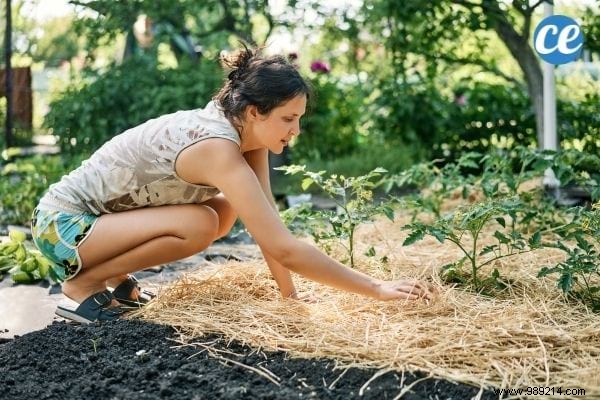
There are two essential rules to follow when controlling weeds with mulch.
1. Start by weeding the soil completely.
The soil must be thoroughly weeded before mulching. Indeed, mulch is not a weed killer!
But it will help prevent weed seeds from growing.
2. Spread the mulch in a thick layer of about 6-8 cm.
The layer should be thick enough to prevent weed shoots from breaking through.
For young plants or for shady areas, 2 or 3 cm may be sufficient.
Successful mulching requires watering before and after mulching.
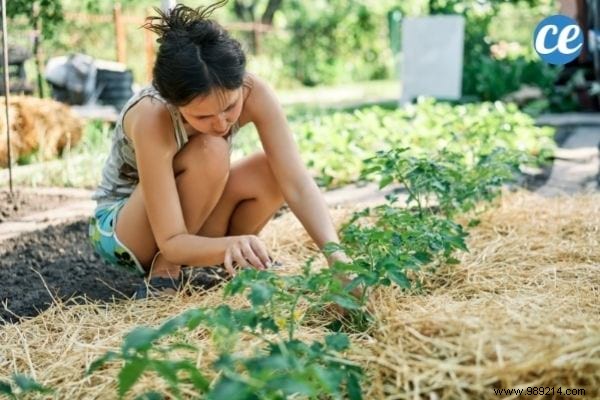
- For soils with a lot of weed seeds. Use the double mulch technique to prevent a weed invasion. After putting your plants in the ground, water them well. Then, spread some newspaper and cover it with a second layer of plant mulch.
- In the spring, remove the mulch around the base of perennials and bulbs to make them grow faster. Mulches that retain moisture, such as wood chips, can slow soil warming.
- Over time, add a few centimeters of mulch . Mulching can be done throughout the year, but especially in the fall. This helps protect plants from the cold while nourishing the soil for spring.
- Avoid covering the crown of the plant (the transition zone between the root and the stem). Mulch heaped against the stems of shrubs and trees can cause rot. It can also attract rodents to nest there.
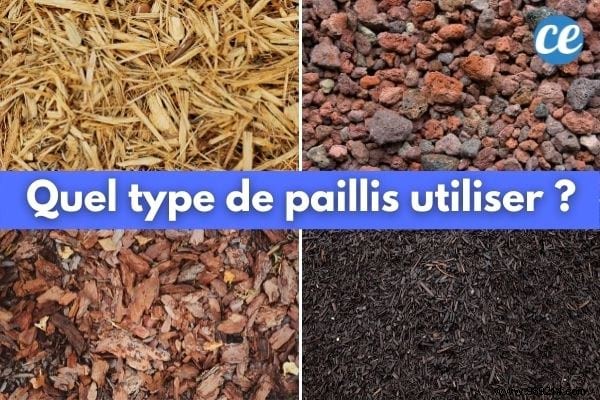
Depending on the nature of the soil, the plant species, the desired effect or the budget, different types of mulch should be considered.
Each has its pros and cons.
Whether vegetable, mineral or synthetic mulch, all mulches prevent weed seeds from growing .
Installed at the right thickness and on clean soil, mulching will significantly reduce weed control.
Plant mulches are also biodegradable and have a big advantage:as they decompose, they feed the soil.
Mineral mulches do not break down, but are more durable than plant mulches.
In contrast, mineral mulches do not feed the soil.
Thus, they are a good option for already rich soils, or if the purpose of mulching is to limit weed control.
Plastic films and other synthetic mulches do not break down or enrich the soil.
But that doesn't necessarily mean they aren't a good option.
Indeed, the black plastic film allows the floor to heat up more quickly and helps retain heat overnight.
Therefore, plastic wrap is a good option for vegetables that need heat, such as eggplants and cherry tomatoes.